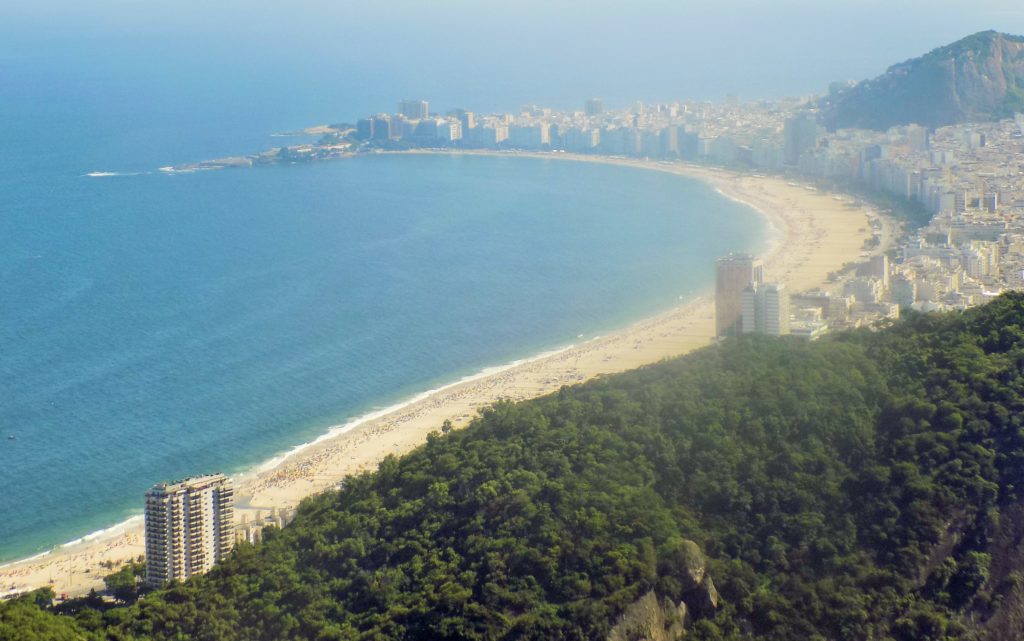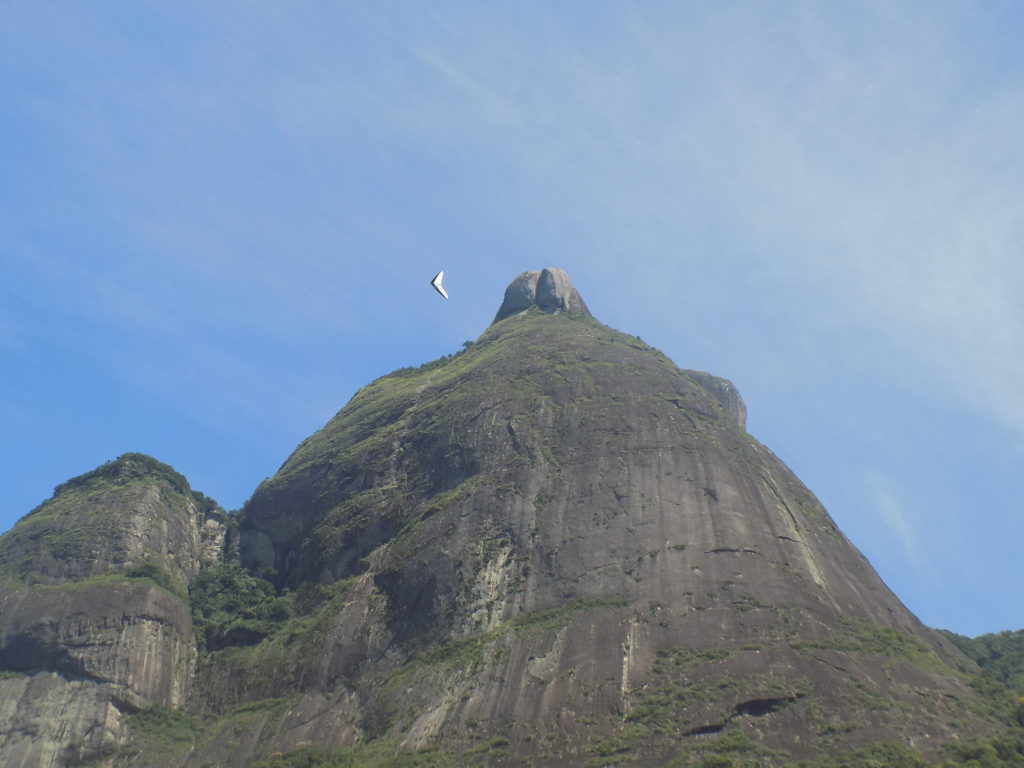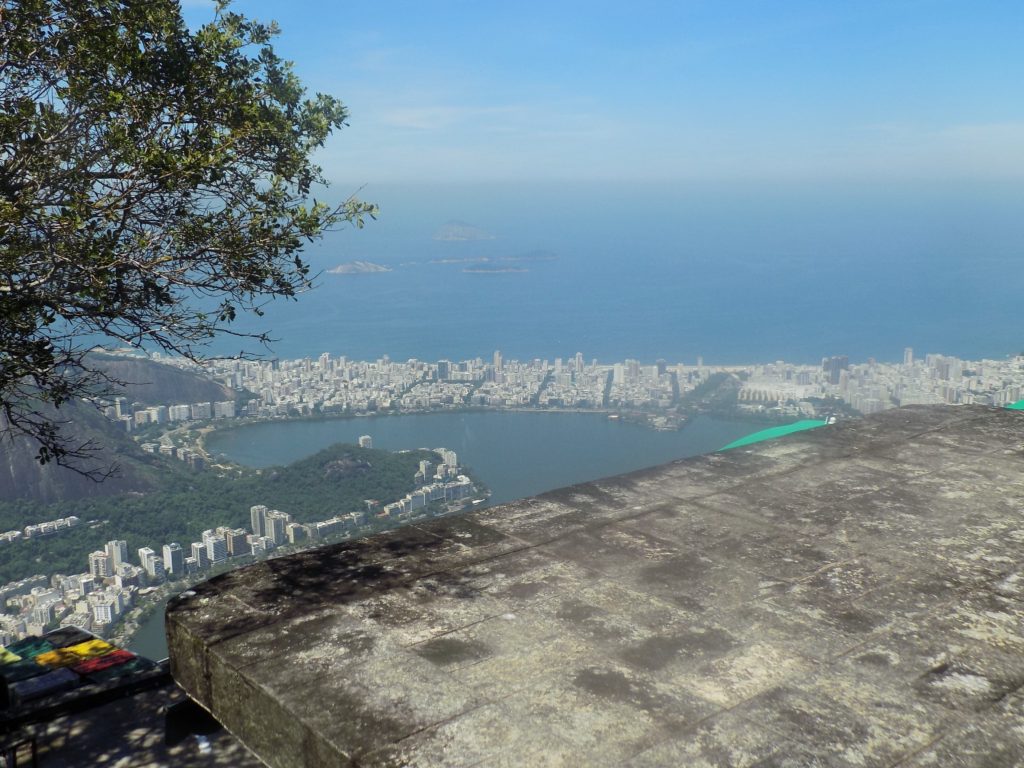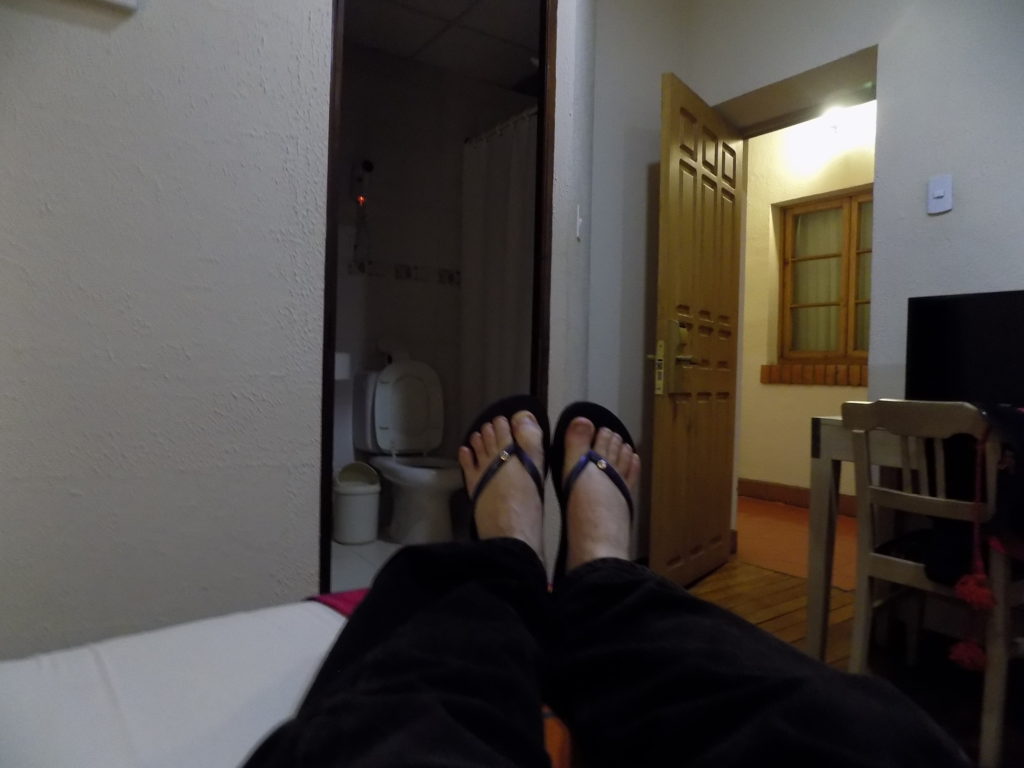O Sole Rio.
Given that there is no rio (Portuguese for river) near Rio and that the principal body of water abutting the city is now known by its Tupi name Guanabara Bay, whence the name Rio de Janeiro?
Although the area had likely been inhabited by the Tupi-Guarini for 1,500 to 2,000 years before the first documented arrival of Europeans, those documents point to two Portuguese explorers Gaspar de Lemos and Gonçalo Coelho at least one of whom sailed into the bay on 1 January 1502. The historian Vasco Mariz asserts that the exploration team dubbed the oceanic inlet Ria de Janeiro or January’s Lagoon. (This seems plausible to me since it seems unlikely that two experienced sailors would mistake this bay for the mouth of a river.) He further posits that somewhere along the line, Ria transformed into the more familiar Rio and this is how the name that passed through history to the city we know today.
Music and passion are always in fashion.
Known for the long sweeping arc stretching more than four kilometers along the Atlantic Ocean,
Copacabana beach is among the most famous beaches in the world. But, as we would (and you will) later learn, the beach and the eponymous neighborhood appropriated the name from a Bolivian town on the shores of Lake Titikaka. (I’m using the spelling preferred by the region’s Aymará people rather than the westernized Titicaca and will continue to do so throughout this journal.)
Two forts, Fort Duque de Caxias on the north and Fort Copacabana on the south, frame and guard the beach. Since the hotel is a bit closer to the beach’s southern end, I walked to the gates of Fort Copacabana which now houses a military museum (that I didn’t visit).
While I did walk away from the beach to get a feel for the neighborhood, I spent most of my morning and early afternoon walking along the beach or the promenade along the Avenida Atlântica which has a tiled typically Portuguese pavement pedestrian walkway in a wave pattern designed by Roberto Burle Marx,
a bike lane (visible on the right side of the photo above), six lanes for vehicular traffic, and an area in the median for myriad vendors. Here are the rest of my photos (and there aren’t many) from the day.
Brazilian Buffet.
One thing I learned several years ago on my train journey from Beijing to Saint Petersburg was that if you’re on a small group tour and you want to find an inexpensive buffet with (possibly) authentic local cuisine, ask your guide. When we three travelers convened in the hotel lobby with our guide Berner he suggested just such a place. (Groud, our group’s guide on that long train trip, always seemed to know of at least one such buffet in every stop along the way. I think it’s likely the guides know these spots because they’re not particularly well compensated and need to feed themselves inexpensively.)
In this instance, the restaurant in question Aipo e Aipim was a few blocks from the hotel. It was not an American style all you can eat buffet but rather the sort where you load your plate with all the food you want and pay by weight. Second helpings require a second payment. During dinner Berner told us our agenda for Thursday which would include a combined walking and driving tour of Rio plus a ride to the top of Pão de Açúcar aka Sugarloaf Mountain.
Having had a lengthy midday nap, I was far from tired when we finished our meal. Happily, neither were my two companions. We decided to walk along the beach in the hope that we might spot some extended revelry since Carnival in Rio is more than a single day event. Sadly, it appeared that the Brazilians had partied so long into the morning that they were recharging their batteries for the next celebratory explosion expected Saturday. Of course, this would be the day we’d leave for Foz de Iguaçu so Jill alone among us would carry memories of the city’s famous Carnaval parties.
A bit disappointed by the lack of festivities, we sat for a nightcap at one of the many beach cafés – choosing one with live music – a solo vocalist wearing a sharp looking hat and accompanying himself on guitar. During his break we listened to recorded music and, after the manager lowered the volume at our request, the roll of the nearby surf. As we returned to the hotel, we stopped at one of the many elaborate sandcastles and let the builder take our photo followed by our donation of a few coins in appreciation.
Fortunately, our smiles and good spirits would last not only for the entire journey but beyond.
First thoughts about Rio.
It seems to me that distant women (or men for that matter) are almost always at their most beautiful when they maintain that distance. They don’t lose their beauty but, with a certain inevitability, the closer we come – physically or emotionally – the more their nicks and flaws emerge. For me, this is Rio de Janeiro. Viewed from the approach of my airplane or in some of the famous photos from the peaks of Pão de Açúcar or Corcovado, Rio is a glistening metropolis crammed with glittering towers comprised of charming neighborhoods nestled between mountains or following the crescent arcs of Atlantic beaches like Copacabana.
Come close to the city and the rough edges emerge. From the crammed favelas (slums) and their precariously balanced shelters to the somewhat gone to seed facades of many of those distantly gleaming towers to the breadth of olfactory experiences that transform swiftly from the welcoming scent of a favorite kitchen to the similarly familiar but far less appetizing stench of rotting trash and human waste, Rio isn’t shy about showing you who it is with all its beauty and all its imperfections.
Rio brazenly challenges you. If you are to enjoy the beauty of its dramatic landscapes, from the stark bornhardts like Pão de Açúcar or the Two Brothers
to the reclaimed Tijuca Forest to the wide beaches of Ipanema and Copacabana,
if you want to admire the grand architecture of the Cathedral or the city’s rising towers, 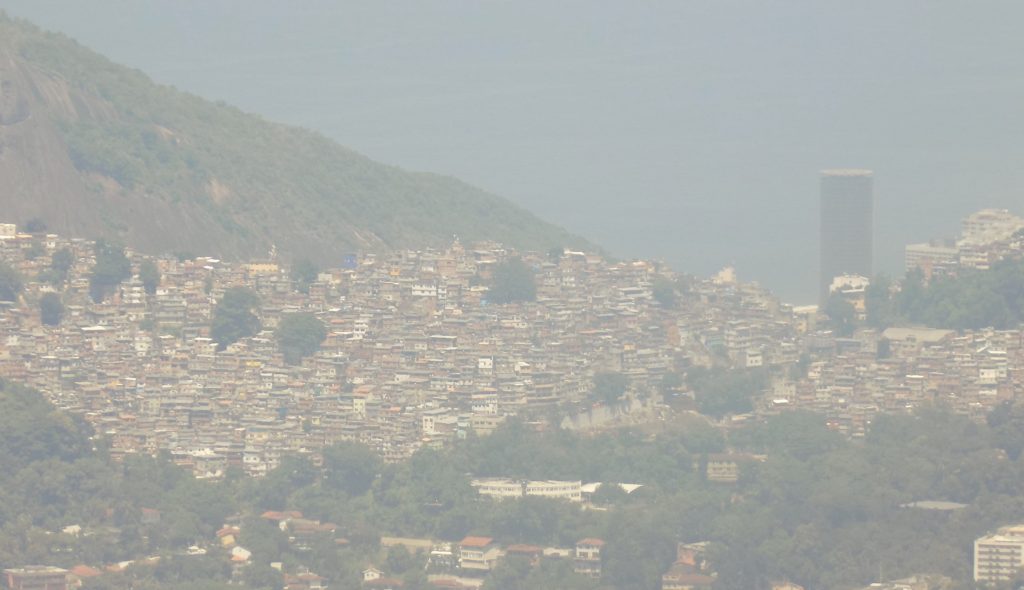
you must also accept the crowds, the smells, and the slums.
“Take me as I am with my beauty and my blemishes,” the city says defiantly. “Or take me not at all.”
A brief diversion.
Before I settle in for the night, I have one last photo to share. This is a special one for someone I’ve met only once. He posts comments on the Testudo Times website using the screen name NeonParkTerp. On 10 March he wrote in a comment, “FH Fan in Rio and Carnival. Please just don’t post any photos of TC in a thong.” Of course, I viewed that as something of a challenge, so I had to arrange to take just such a photo. I hope neither he nor you find it too shocking.
(For those who don’t know, what we in the States call flip-flops are called thongs in Australia. These particular thongs came courtesy of Jill.) ?
